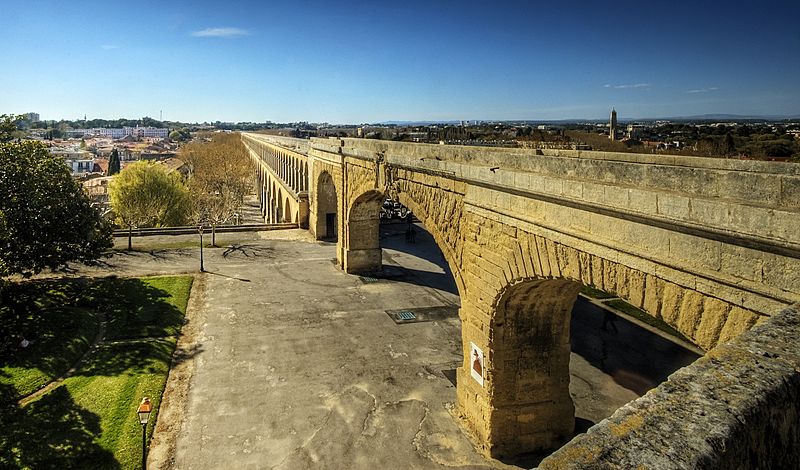Image: Aqueduc du Peyrou, Montpellier

Description: The ancient Romans constructed numerous aqueducts to supply water to cities and industrial sites. These aqueducts were amongst the greatest engineering feats of the ancient world, and set a standard not equalled for over a thousand years after the fall of Rome. Many cities, such as Segovia, still maintain and use the ancient aqueducts for their water supply even today. The Romans typically built numerous aqueducts to serve any large city in their empire, as well as many small towns and industrial sites. The city of Rome itself, being the largest city, had the largest concentration of aqueducts, with water being supplied by eleven aqueducts constructed over a period of 500 years. They served potable water and supplied the numerous baths and fountains in the city, as well as finally being emptied into the sewers, where they performed their last function in removing waste matter. The methods of construction are well described by Vitruvius in his work De Architectura written in the first century BC. His book would have been of great assistance to Frontinus, a general who was appointed in the late first century AD to administer the many aqueducts of Rome. He discovered a discrepancy between the intake and supply of water caused by illegal pipes inserted into the channels to divert the water, and reported on his efforts to improve and regulate the system to the emperor Nerva at the end of the first century AD. The report of his investigation is known as De aquaeductu. In addition to masonry aqueducts, the Romans built many more leats; channels excavated in the ground, usually with a clay lining. They could serve industrial sites such as gold mines, lead and tin mines, forges, water-mills and baths or thermae. Leats were very much cheaper than the masonry design, but all aqueducts required good surveying to ensure a regular and smooth flow of water. From Wikipedia, the free encyclopedia
Title: Aqueduc du Peyrou, Montpellier
Credit: Flickr: Roman aqueduct
Author: Wolfgang Staudt
Usage Terms: Creative Commons Attribution 2.0
License: CC BY 2.0
License Link: https://creativecommons.org/licenses/by/2.0
Attribution Required?: Yes
Image usage
The following page links to this image:

